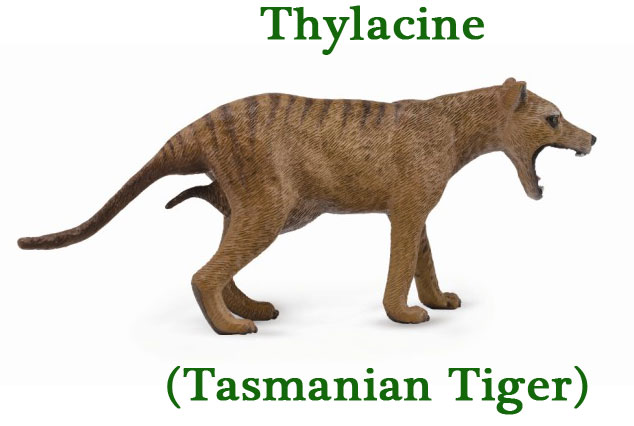Remembering the Beautiful Thylacine – Threatened Species Day
Remembering the Thylacine
On this day, eighty years ago, the last known Thylacine died at Beaumaris Zoo in Hobart. It was on the 7th of September 1936, that staff at the Tasmanian zoo discovered “Benjamin”, as the animal was believed to have been named, dead. Sadly, just two months earlier, the species Thylacinus cynocephalus had been granted protected status, after more than a hundred years of persecution.
Today, we live in what is regarded as more enlightened times, and September 7th in Australia is “National Threatened Species Day”, a day dedicated to honouring those people who work to protect Australia’s unique wildlife. It is also a day for reflecting on how our own species has led to the demise of other species. For example, the Thylacine was thought to attack and kill sheep and other domesticated animals and so it was hunted with bounties being paid for each “Tasmanian Tiger” killed.
The Sad Tale of Benjamin – The Last Known Tylacine
Benjamin is believed to have been captured in the Florentine Valley area (south central Tasmania) in 1933 and brought to Beaumaris Zoo (Hobart). Although once thought to be female, a more recent analysis confirmed that Benjamin was indeed, in all probability a male. An inability to determine gender reflects the relative neglect the animal suffered in the zoo. Indeed, the fact that the animal was even nick-named Benjamin has been challenged by a number of academics and authors.
The Tasmanian winter of 1936 was particularly severe and it seems that the last known Thylacine in captivity probably died of exposure after having been locked out of its sheltered sleeping quarters. And so, the last Thylacine was dead. Ironically, Beaumaris Zoo, for years dogged by financial difficulties, was to close shortly afterwards. It was shut down by the Hobart City Council in the last week of November 1937.
In 1996, on the sixtieth anniversary of the death of the only Thylacine to have been given official protection, “National Threatened Species Day” was declared. A time to reflect on the demise of the Thylacine and how similar fates await other species of flora and fauna unique to Australia unless action is taken to reverse their decline.
The CollectA Female Thylacine Model
Everything Dinosaur is proud to have added the beautiful CollectA female Thylacine model to its range of CollectA models. The Thylacine, (Thylacinus cynocephalus), was the largest carnivorous marsupial to have lived in Australia in modern times and the last member of a once much more diverse group of marsupials. The “Tasmanian Tiger” may be thought to be extinct, but is it?
The CollectA Thylacine Model
Picture credit: Everything Dinosaur
To see the range of not to scale prehistoric animal figures in stock at Everything Dinosaur: CollectA Age of Dinosaurs Popular Range.
Is the Thylacine Extinct?
The main island that makes up the State of Tasmania is a fraction under 25,000 square miles in size, that’s around three times the size of Wales or about the size of the State of West Virginia in the USA. There have been a number of reported sightings of “Tigers” both in Tasmania and on the Australian mainland.
Evidence for the existence of Thylacines is a little threadbare to say the least. Blurred and very indistinct photographs, casts of footprints and some poor quality film footage, but nonetheless, there are a number of people, including academics who fervently believe that the Thylacine, although extremely endangered and very vulnerable, is still holding on. Every now and then a new eyewitness account is published.
Let’s hope that the Thylacine still exists and that one day soon, September 7th will have even greater significance to the people of Australia.
Visit Everything Dinosaur’s website: Everything Dinosaur.


